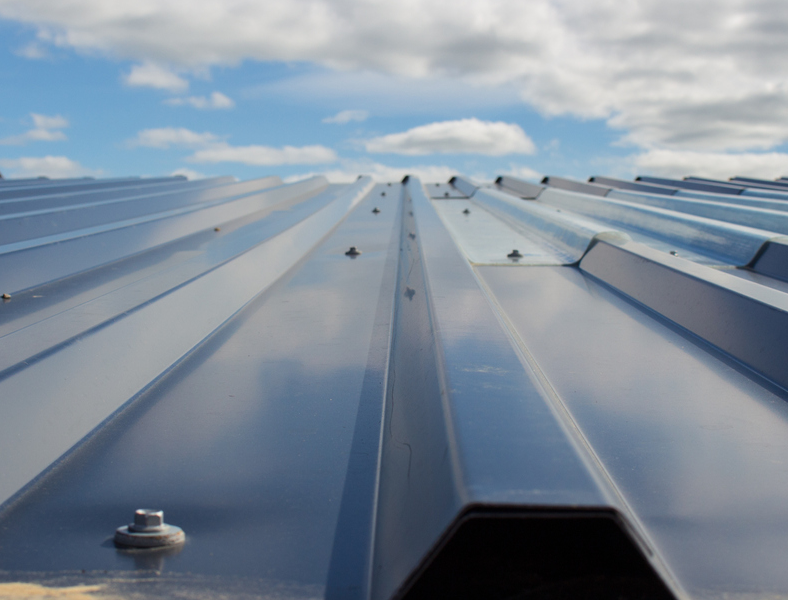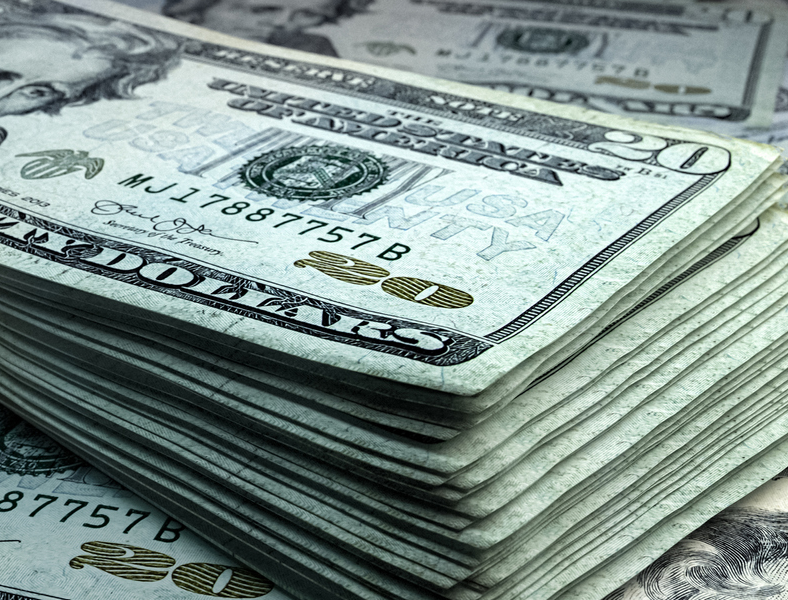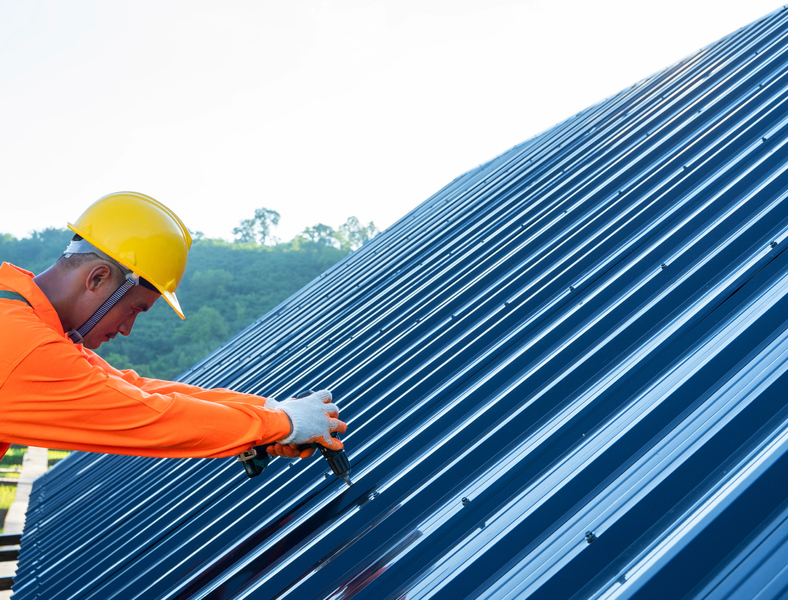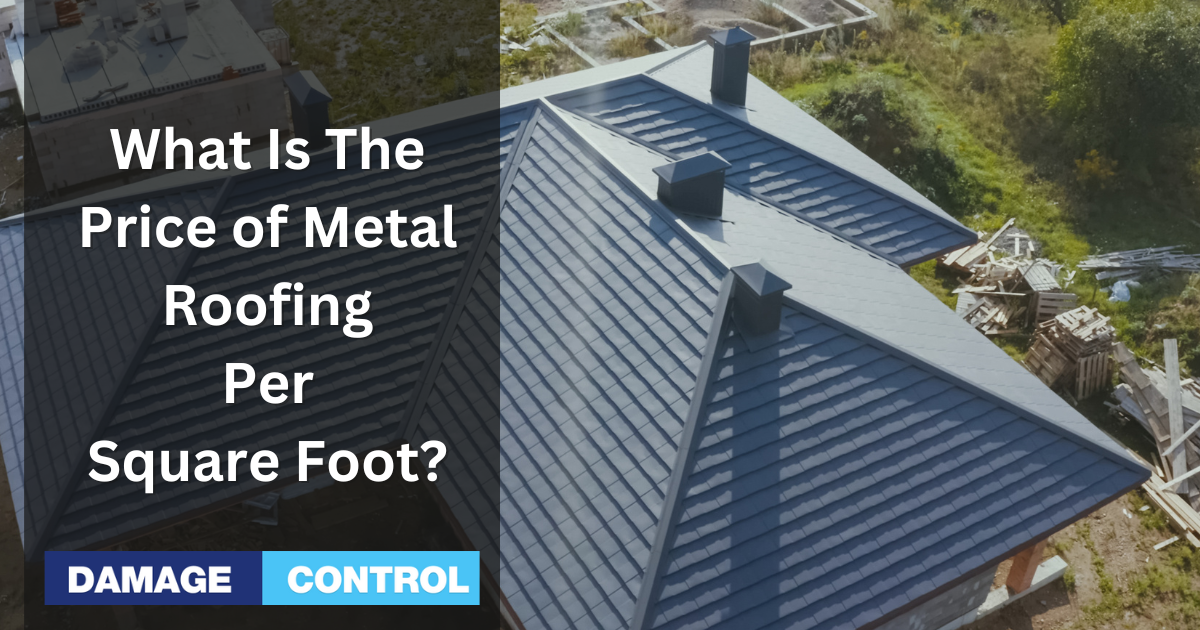Hey there! So you're interested in metal roofing, huh? Great choice! Before diving in, it's essential to understand the costs involved. In this article, we'll break down the price of metal roofing per square foot so that you can make an informed decision. Stick around to discover why knowing the ins and outs of metal roofing prices is so important!
Why Choose Metal Roofing?

What are the advantages of metal roofing?
Now, you might be wondering: why should I even consider metal roofing? Well, there are some pretty fantastic benefits. For starters, metal roofs are known for their durability and long lifespan. They can last up to 50 years or more with proper maintenance. They also resist extreme weather conditions, fire, and even pesky insects.
Energy efficiency is another big plus. Metal roofs reflect sunlight, keeping your home cooler in the summer and reducing energy bills. And let's not forget the environment! Most metal roofs are made from recycled materials and can be recycled again at the end of their life.
How does metal roofing compare to other materials?
So how does metal roofing stack up against other materials like asphalt shingles, wood shakes, or clay tiles? In terms of longevity and durability, metal takes the cake. While asphalt shingles may be cheaper upfront, they typically last only 20-30 years and are more susceptible to damage from the elements. Wood shakes and clay tiles can last longer but often require more maintenance.
In short, metal roofing offers a unique combination of durability, energy efficiency, and environmental friendliness. No wonder it's gaining popularity among homeowners!
Decoding the Basics of Metal Roofing
What is Metal Roofing?
Before diving into pricing, let's get a grip on what metal roofing is. It's a roofing system made from metal pieces or tiles, designed to protect your home from the elements.
What materials are used in metal roofing?
There's a wide range of materials used in metal roofing, each with its own pros and cons. Let's take a quick look at the most common ones:
Steel
The go-to choice for many is strong, durable, and affordable steel. It's often coated with zinc or aluminum to prevent rusting.
Aluminum
Lightweight and rust-resistant, aluminum is a popular choice for coastal areas. It's more expensive than steel but requires less maintenance.
Copper
A high-end option, copper is beautiful and long-lasting. However, it comes with a hefty price tag.
Zinc
Zinc is eco-friendly, durable, and self-healing, meaning it can “heal” scratches over time. It's more expensive than steel but lasts longer.
Tin
Though not as common nowadays, tin is still used in some areas. It's lightweight and corrosion-resistant but has a shorter lifespan than other metals.
What are the types of metal roofing?
There are various styles and types of metal roofing to choose from. Here's an overview of some popular options:
Standing Seam
This type of metal roof features raised seams that interlock, providing a sleek look and excellent weather resistance.
R-Panel
R-Panel roofing is a low-profile, cost-effective option with exposed fasteners, making it easy to install.
Stamped Steel
Stamped steel mimics the look of traditional shingles or tiles, offering a unique aesthetic with the benefits of metal.
Stone Coated Steel:
Stone-coated steel has a layer of stone granules adhered to the surface, giving it the appearance of traditional shingles while maintaining the durability of metal.
Shakes, Shingles, Clay, Cement
These metal roofing options mimic the look of wood shakes, shingles, clay, or cement tiles. They offer the visual appeal of traditional materials with the strength and longevity of metal.
Now that we've covered the basics, let's talk about the price of metal roofing per square foot. Bear with me, there's a lot to cover and understand in the following sections, but you'll understand clearly once completed.
What Factors Influence the Price of Metal Roofing?

How does the material impact the cost?
As we've seen, various materials are used in metal roofing. The choice of material plays a huge role in determining the cost. For instance, steel and aluminum tend to be more affordable than copper or zinc. So, when deciding on a metal roof, weigh the pros and cons of each material against your budget.
Does geographical location affect prices?
You bet it does! Prices for metal roofing can vary based on your region, primarily due to labor costs and material availability differences. It's always a good idea to get quotes from local contractors to get an accurate picture of the costs in your area.
What about roof complexity and size?
The size and complexity of your roof play a significant role in the overall cost of a metal roofing project. A larger or more complex roof will require more materials and labor, driving up the price. Features like skylights, chimneys, or unusual angles can also increase the installation cost.
Are labor charges a key cost factor?
Absolutely! Labor charges can make up a substantial portion of the total cost of a metal roofing project. The more complex the installation, the higher the labor costs. Keep in mind that experienced and reputable contractors might charge more, but they'll likely provide a higher quality installation, which can save you money in the long run.
The Cost of Different Metal Roofing Types
What's the average price of standing seam roofs per square foot?
With their sleek appearance and excellent weather resistance, standing seam roofs typically cost between $4 and $6 per square foot on a national average. Keep in mind this price range can vary based on factors like material choice, location, and installation complexity.
How much does R-panel roofing cost per square foot?
R-panel roofing, known for its low-profile design and easy installation, generally costs $3 to $5 per square foot. Again, remember that the actual cost will depend on factors such as material, location, and the specifics of your roof.
What's the average price for stamped steel roofing per square foot?
Stamped steel roofing, which imitates the look of traditional shingles or tiles, usually costs between $4 and $7 per square foot. As with other types, the cost can fluctuate based on various factors.
Is stone-coated steel roofing worth the cost?
With its attractive appearance and durability, Stone-coated steel roofing comes at about $5 to $9 per square foot. While it's pricier than other options, the unique aesthetic and long-lasting performance could make it worth the investment.
What's the average price for shakes, shingles, clay, cement roofing per square foot?
Metal roofing that mimics the look of wood shakes, shingles, clay, or cement tiles typically ranges between $4 and $8 per square foot. Consider factors like material, location, and installation complexity when comparing costs.
How Does the Installation Process Affect Metal Roofing Pricing?
What does the metal roofing installation process look like?
The installation process for metal roofing can vary depending on the type and material. In general, though, it follows these basic steps:
- Roof inspection and measurements: Before installation, a contractor will inspect your roof and take measurements to determine material requirements.
- Preparing the roof deck: The existing roof may need to be removed, and the roof deck must be prepared to ensure it's clean, dry, and structurally sound.
- Installing underlayment: A moisture barrier or underlayment is installed to protect the roof deck from water infiltration.
- Installing metal panels or tiles: The metal roofing materials are installed, starting at the bottom and working upward, with proper alignment and overlapping to ensure a watertight seal.
- Adding flashing and trim: Flashing and trim are added to areas like valleys, ridges, and edges to prevent water leaks and provide a finished appearance.
- Final inspection: The contractor will perform a final inspection to ensure the installation is up to par and meets all necessary requirements.
How can installation complexities influence the final price?
The installation process's complexity can significantly impact the overall cost of a metal roofing project. Factors like roof pitch, the presence of dormers, chimneys, or skylights, and the type of metal roofing system can all contribute to increased labor and material costs.
For instance, a steep or high roof might require additional safety measures and specialized equipment, driving up labor costs. Similarly, custom flashing or trim work around roof features can increase labor and material expenses.
Discussing these complexities with your contractor to get an accurate estimate and avoid any surprises down the road is essential.
What About Maintenance and Repair Costs for Metal Roofing?

What does regular upkeep of metal roofs look like and how much does it cost?
While metal roofs are known for their durability, regular maintenance is still essential to ensure they stay in top shape. Some common upkeep tasks include:
- Cleaning debris: Keep your roof free of leaves, branches, and other debris to prevent water buildup and potential damage.
- Checking for damage: Inspect your roof for any signs of wear, rust, or damage, particularly after extreme weather events.
- Repainting or resealing: Depending on the material, you may need to repaint or reseal your roof every few years to maintain its protective coating.
Regular maintenance costs are typically minimal, especially compared to other roofing materials. However, it's crucial to budget for these tasks to keep your metal roof in prime condition and extend its lifespan.
What about unforeseen repairs? How much should you budget for?
Although metal roofs are built to last, unexpected repairs may still be necessary. Factors like extreme weather, accidents, or incorrect installation can lead to issues that require fixing. The cost of repairs will depend on the extent of the damage and the specific material used for your roof.
Generally, it's wise to set aside a small budget for unforeseen repairs. This will ensure you're prepared in case any issues arise, and you can address them promptly to prevent further damage.
Is Metal Roofing Cost-Effective in the Long Run?
What's the lifespan of metal roofing and how does it affect costs?
One of the significant advantages of metal roofing is its impressive lifespan. Proper maintenance means a metal roof can last up to 50 years or more, outperforming many other roofing materials. This durability means you'll likely save money in the long run, as you won't need to replace your roof as frequently.
How does energy efficiency contribute to long-term savings?
Metal roofs are known for their energy efficiency, reflecting sunlight and keeping your home cooler during hot summer. This can translate to lower energy bills, as your cooling system won't have to work as hard. In the long run, these energy savings can offset some initial costs of installing a metal roof.
Can metal roofing increase property value?
Absolutely! Metal roofing can increase your home's value due to its durability, low maintenance, and energy efficiency. These benefits appeal to potential buyers, who may be willing to pay more for a home with a metal roof. Plus, the attractive appearance of metal roofing can enhance your home's curb appeal, further boosting its value.
In short, the long-term cost-effectiveness of metal roofing makes it an excellent investment for homeowners looking for a durable, energy-efficient, and low-maintenance option that can increase property value.
What Financial Assistance and Incentives are Available for Metal Roofing?
Are there tax credits and rebates for metal roofing?
Tax credits and rebates are often available for homeowners who choose energy-efficient metal roofing. These incentives can help offset some of the initial costs of installation. For instance, the federal government may offer tax credits for energy-efficient improvements, including metal roofs that meet specific energy-saving criteria.
Some states and local utilities also provide rebates or incentives for installing energy-efficient roofing materials. Be sure to check with your local utility company and research your state's programs to see if you're eligible.
What about insurance considerations for metal roofs?
Installing a metal roof can lead to lower insurance premiums for some homeowners. Metal roofs are known for their durability, fire resistance, and ability to withstand severe weather conditions. As a result, some insurance companies view homes with metal roofs as lower risk and may offer discounts on homeowners' insurance policies.
Contact your insurance provider and discuss your metal roofing plans to determine if you're eligible for a discount. They may require specific documentation or an inspection to confirm your roof meets their requirements for a discount.
By taking advantage of available financial assistance, incentives, and insurance discounts, you can further increase the cost-effectiveness of your metal roofing investment.
Frequently Asked Questions
Is metal roofing more expensive than traditional roofing?
Metal roofing can be more expensive than traditional roofing materials like asphalt shingles. However, the long lifespan, low maintenance, and energy efficiency of metal roofs can make them more cost-effective in the long run.
What is the most affordable type of metal roofing?
Steel and aluminum are generally the most affordable metal roofing materials. Within those materials, R-panel roofing tends to be one of the most budget-friendly options.
How long does a metal roof last, and how does it affect the cost?
A metal roof can last up to 50 years or more with proper maintenance, outlasting many other roofing materials. This longevity can result in long-term cost savings, as you won't need to replace the roof as often.
Can I install metal roofing myself to save on costs?
While DIY installation may seem like a way to save on costs, it's not recommended for most homeowners. Improper installation can lead to leaks, damage, and even void the warranty. Hiring a professional ensures a proper installation and protects your investment.
Are there any financial assistance programs available for metal roofing installation?
Tax credits, rebates, and incentives are often available for energy-efficient metal roofing. Check with your local utility company and research your state's programs to determine eligibility.
How does the complexity of a roof design impact the final cost?
Complex roof designs with steep pitches, unique angles, or additional features like skylights or chimneys can increase labor and material costs, impacting the final price of a metal roofing project.
What are the common maintenance costs associated with metal roofing?
Maintenance costs for metal roofs are typically minimal, involving tasks like cleaning debris, inspecting for damage, and repainting or resealing when necessary. Regular upkeep helps extend the lifespan of your roof.
How does geographical location influence the cost of metal roofing?
Geographical location can affect the cost of metal roofing due to differences in labor costs and material availability. It's important to get quotes from local contractors to get an accurate picture of costs in your area.
Wrapping Up: What's the Real Price of Metal Roofing Per Square Foot?
In conclusion, the price of metal roofing per square foot can vary widely depending on factors like material, location, roof complexity, and labor costs. However, the long-term benefits of metal roofing, such as durability, low maintenance, and energy efficiency, can make it a cost-effective choice for many homeowners.
Suppose you're considering a metal roof for your home. In that case, it's essential to research different materials and styles, gather quotes from local contractors, and explore financial incentives to help offset the initial costs.
As you explore your options, be sure also to check out our related articles to gain a deeper understanding of other roofing materials and considerations. Discover the longevity of concrete options and compare them to metal roofing. Learn what size hail causes excess damage on roofs and how a metal roof can provide better protection. We've got you covered if you're wondering if you should install metal over shingles. And for more details on the durability of metal roofs, read our article on how long a metal roof lasts.
By arming yourself with knowledge, you'll be able to make an informed decision that best suits your needs, budget, and home aesthetics.

